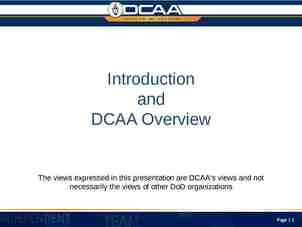Applications for Intellectual Property International IP Protection
13 Slides489.24 KB
Applications for Intellectual Property International IP Protection IP Enforcement Protecting Software J E F F R E Y L . S N O W, PA RT N E R COOPER & DUNHAM N AT I O N A L S B I R / S T T R C O N F E R E N C E JUNE 16, 2015
International IP Protection Many types of intellectual property can be protected, both domestically and internationally Patents Designs Trademarks Copyrights Trade dress Trade secrets 2
Patents One year period to claim priority to earlier application (e.g., filing date of U.S. provisional or non-provisional application) Direct national filing PCT (Patent Cooperation Treaty) application Non-extendable deadline Absolute novelty requirement in most countries Beware: Without priority claim, your own earlier patent or patent application may become prior art to your later application 3
Direct National Filings Direct filing in each country There are regional patent offices that cover multiple countries European Patent Office (EPO) Eurasian Patent Office African Regional Intellectual Property Organization (ARIPO) Filing requirements vary by country Examination varies by country Different types of foreign patents Utility models (e.g., Germany) Innovation patents (Australia) 4
PCT Applications Administered by WIPO (World Intellectual Property Organization) Placeholder for national applications File in a “receiving office” and select a national patent office for examination Search conducted and substantive examination Deadline to file in individual countries Usually 30 months or 31 months from earliest claimed priority date Watch out for other deadlines 5
Designs Protect the ornamental aspects of a product Based on drawings Patents in the United States; registrations in other countries Similar procedures to utility patents Six month period to claim priority to earlier application New procedure for multi-national filing under the Hague Agreement 6
Considerations for International IP Protection Standards vary by country Substantive examination (patentability) Patentable subject matter Prior art Effect of publication Expense Filing fees and attorneys’ fees Ongoing maintenance fees and annuities 7
IP Enforcement Patent cases in Federal Courts Infringement actions Declaratory judgment actions ITC (International Trade Commission) actions Patent Office post-grant procedures IPR (inter partes review) PGR (post grant review) Interplay between post-grant procedures and court actions Preclude further review of issues or prior art Stay of court actions 8
Elements of Infringement Actions Infringement claim Ownership of patent or right to enforce it Patent presumed valid Prove infringement by preponderance of evidence Defenses Non-infringement Invalidity based on prior art or failure to comply with requirements of patent statute Unenforceability (i.e., inequitable conduct) Remedies Damages (reasonable royalty or lost profits) Injunction 9
Considerations for IP Enforcement Enforcing foreign corresponding patents Time and expense Patent reform efforts Courts Heightened legal standards Fee shifting Legislative America Invents Act (AIA) Post-grant procedures 10
Protecting Software Question: What is patentable? Patentable subject matter 35 U.S.C. § 101: process, machine, manufacture, composition of matter Excluded: laws of nature, physical phenomenon, abstract ideas 11
Considerations for Protecting Software Latest Supreme Court case: Alice Corp. v. CLS Bank Test: (a) Is the claim directed to an abstract idea? (b) If so, does the claim contain an “inventive concept” sufficient to transform the abstract idea into a patent eligible application? Specific issues for software Reciting a general purpose computer may not add an “inventive concept” Are the claimed functions performed by the computer purely conventional? May or may not depend on how invention is claimed Method Computer-implemented system Computer-readable medium Consider copyright protection 12
Questions? Jeffrey L. Snow, Partner Cooper & Dunham [email protected] 13


















